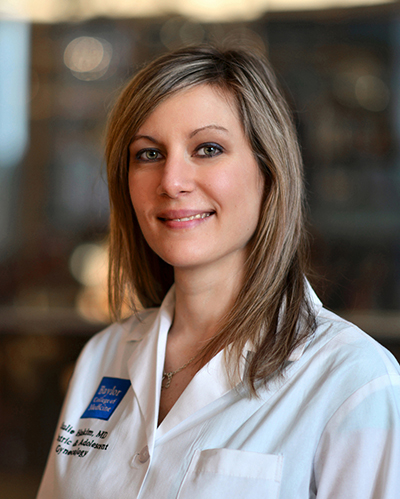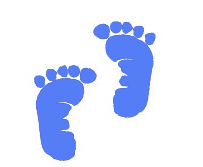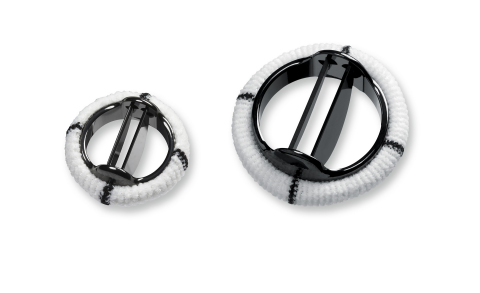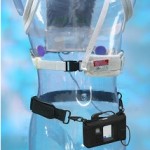Bringing pediatric devices to market has long been a difficult task due to the smaller patient pool (literally and figuratively speaking) and the lower financial reward. Regardless, there will continue to be a patient need for products that can address the anatomical and developmental needs of children, and physicians aren’t going to stop asking for technologies that can help them better serve this population.
Earlier this month the National Capital Consortium for Pediatric Device Innovation (NCC-PDI) gave $250,000 to six teams that are creating technologies to address unmet needs in pediatrics. One of them is Baylor College of Medicine and Texas Children’s Hospital based in Houston. Led by Julie Hakim, M.D., pediatric and adolescent gynecology fellow at Baylor, the team has created a custom vaginal stent and dilator intended for girls born with congenital abnormalities and was awarded $50,000 for their innovation by NCC-PDI.
“There’s no other customized gynecologic device on the market, and certainly not in the pediatric realm,” says Hakim. “The pediatric population—girls with significant congenital GU anomaly—would be the best population to have customized a device.” During a recent discussion with MedTech Intelligence, Hakim describes the process for developing the stent and dilator, along with the manufacturing methods being explored (both injection molding and 3-D printing techniques). According to Hakim, physicians who want to use the technology contact the team on a daily basis, so they’re working toward an ambitious goal of commercialization by the first half of next year.

MedTech Intelligence: What’s the population base for this device?
Julie Hakim: About 50,000 girls across North America have any one of six conditions that would mean they need some type of congenital urinary reconstruction or reconstruction of their vaginas. What makes our product more relevant globally is that there are also adult women who could benefit from our product if we develop it such that it’s customizable. If you add the adult women, our market size is close to 340,000.
The women who would benefit from these devices are those who have scars, or shortened, deformed vaginas such that they could benefit from vaginal reconstruction. Most of the time, women get scarring of their vaginas if they’ve had pelvic radiation, a hysterectomy, or surgery because of cancer, as they tend to have very poor vaginal tissue afterwards. We’re basically targeting the same issue with young girls and adult women—those [who have] congenital anomalies (i.e., scar tissue in the vagina). How can we make a better device that prevents scar tissue formation?
MTI: What was the process for developing the product?
Hakim: Right now, there isn’t a vaginal stent that exists on the market for kids or adults. In the past, we were hand crafting our stents. The first part of development was identifying the problem. These girls have congenital anomalies, and they go on to have some kind of vaginal reconstructive surgery. After surgery, usually a stent is placed in the vagina such that the vaginal walls don’t touch each other and scar shut as the tissue is healing. There’s a high rate of restenosis, or re-scarring, and up to 73% [of girls] have some kind of scar tissue that forms in their vagina. The number one thing was identifying the issue: Scar tissue forms, and we don’t have a way to prevent it.
Then we looked at what stents used to exist on the market: Adult stents did exist, but they’ve been off the market for a number of years, and they weren’t particularly suited for pediatric patients. So we took what the stent used to look like, rescaled and redrew it in CAD, and then reprinted it using a 3-D printer. We can test the balloon inflation and whether our designs worked better than what was previously on the market.
We had the same process for the dilator. It was a bit easier because more girls use dilators than stents, and so we had quite a few patients in our clinic who we could go to for feedback on what they hated about the current dilators.
We 3-D printed our prototypes. Going forward, we’re going to bring our designs of the dilators and stents to an international conference for pediatric adolescent gynecologists and ask for feedback from the providers. Using some of the grant money, we have a development company that works with physicians who have prototype ideas and [can] help bring it to commercialization.
MTI: What challenges were encountered during the design phase?
Hakim: There were two main challenges: How do we create a device to incorporate the feedback from providers and patients, and then how do we customize it? It was a great learning process. We have a fantastic mechanical engineer who helped me incorporate the feedback from patients and providers into a CAD drawing that we could print.
We ran into difficulties with the 3-D printing in terms of the size with which we were trying to print, some of which was due the limitations of the printer itself. We had a bunch of learning cures: Printing it horizontally versus vertically makes a difference in how fast you can print and how it is completed.
We had a lot of challenges with our balloon design and how the balloon for the stent would be attached onto the inner core. That took a lot of R&D in our lab to find the exact shape that we would need.
Another challenge that gave us some consternation: We embedded magnets in the bottom of the stents, the dilator, and in the top of the handle that we printed. Getting the magnets to perfectly line up and with enough force to be able to remove the device was a challenge. We overcame some of that in the lab, and our development partner will take on [the rest].
The global challenge came in trying to customize the devices. We went through quite a number of iterations of how to get an accurate measurement of the size, volume and configuration of a vaginal track such that we could print something that is an exact match. We’ve reached out to companies that work on 3-D scanning the inner ear to hopefully be able to use their technologies or techniques in the vagina.
MTI: Will the next manufacturing step involve 3-D printing?
Hakim: For getting on to the market we’ll go with “traditional manufacturing,” simply because we want to get our devices to providers and patients as quickly as possible. We literally get emails everyday from providers asking when the stents and dilators will be ready, because they don’t have anything to use. Once the products are on the market, we’ll reinvest some of the revenue into the customization aspect. In terms of customizing, you have to use 3-D printing, because there’s just no way to manufacture something customized that fast if you had to injection mold it in a more traditional way.
We’re going to work on developing the technique for customization, but we probably won’t be there for another year or so because we need some of that additional revenue to come back.
MTI: Which geographic market are you pursuing first?
Hakim: At this point we’re probably looking to pursue the United States. North America has the biggest conglomeration of pediatric adolescent providers (organized into the North American Society for Pediatric Adolescent Gynecology). Once we have the prototype and final designs, our plan is to approach some of the companies that used to provide these stents and dilators and see if they would take up the line again but with our specific devices.
One of the benefits of being awarded this [NCC] grant is the mentorship that comes with it and the people to whom I can ask for advice within the NCC group (i.e., FDA regulatory consultants). Considering predicate devices used to exist on the market for adults and these are basically redesigned devices that already went through FDA approval, I wonder if we have some exemption or at least a reduction in the amount of testing that is required, since the devices existed up to a year ago. We definitely anticipate a challenge there, but I’m hoping that with some good advice from people within the NCC collaborative, we can move it forward faster than we would have otherwise.
MTI: You mentioned that physicians constantly contact your team about the availability of the stent and dilator. What do you tell them?
Hakim: We tell them that we’re actively working on it. We’re hoping to be finished with the design, R&D and the regulatory by Q1 2017, and then have manufacturing completed and be on the market by Q2 2017. It’s aggressive, but that’s the timeframe we set for ourselves.
MTI: In what areas will the remainder of the NCC funding be used?
Hakim: The most important next step is establishing our proof of concept. We have to pay our development firm to do the design history file, finish the R&D and get the final design on paper. We’ve hired some consultants, including one with experience in moving small businesses forward.
The last part of money will go to the next phase of animal studies, specifically with regards to the customization aspect. We’re trying to establish, with some rigor, how we [will] image the vaginal track so that we can print for a specific size, volume and access orientation.
The next stage for us is company formation, and a small portion of grant money will go toward that, along with establishing a board of directors and company skeleton. [Hakim adds that the company has not decided on a name yet.]









